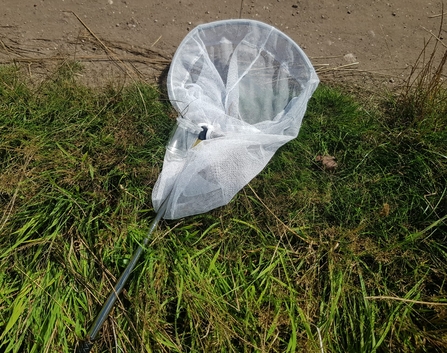What is a bioblitz?
A bioblitz is an activity that involves recording any nature you might find in a particular area, from plants and birds, to insects, fungi and much more! Bioblitz events are a great way that communities can help us understand, protect and restore nature in their local area.
On Friday 11 August with the help of volunteers, staff and the public we carried out a mini bioblitz at Gentleshaw Common, some of which is a Site of Special Scientific Interest (SSSI) and a rare remaining fragment ancient heathland.
Armed with sweep nets, identification charts, bug pots and the iNaturalist app we walked across the Common, soaking in the sun and enjoying the views whilst looking out for anything and everything nature related!






